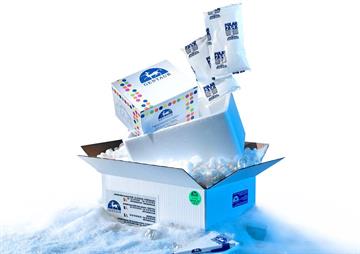Recombinant Human BD-3

Recombinant Human BD-3
3156.2 EUR
In Stock
quantity
Produktdetaljer
Katalognummer: 607 - P1237-.5
Produktkategori: Företag och industri > Vetenskap och laboratorium
ApexBioGentaur
Storlek: 500ug
Parameters
| Storage and shipping | 0 Blue Ice |
|---|
Related Products
CD02271-5ug
Recombinant Human BD-1 protein
Defensins (alpha and beta) are cationic peptides with antimicrobial activity against Gram-negative and Gram-positive bacteria, fungi, and enveloped viruses. They are 2-6 k Da proteins and take important roles in innate immune system. On the basis of their size and pattern of disulfide bonding, mammalian defensins are classified into alpha, beta and theta categories. β-Defensins contain a six-cysteine motif that forms three intra-molecular disulfide bonds. Four human β-defensins have been identified and they are expressed on some leukocytes and at epithelial surfaces. Because β-defensins is cationic peptides, they can therefore interact with the membrane of invading microbes, which are negative due to lipopolysaccharides (LPS) and lipoteichoic acid (LTA) found in the cell membrane. Especially, they have higher affinity to the binding site compared to Ca2+ and Mg2+ ions. Furthermore, they can affect the stability of the membrane. The β-defensin proteins are expressed as the C-terminal portion of precursors and are released by proteolytic cleavage of a signal sequence and, in the case of BD-1 (36 a.a.), a propeptide region. Beta-defensin 1 may play a role in the pathogenesis of severe sepsis. Variation in human Beta Defensin-1 contributes to asthma diagnosis, with apparent gender-specific effects. Variation in human β-defensins 1 contributes to asthma diagnosis, with apparent gender-specific effects. Human BD1 is down-regulated in human prostatic and renal carcinomas.
418.4 €
PROTO15263-2
Recombinant Human BD-2 Protein
Defensins (alpha and beta) are cationic peptides with a broad spectrum of antimicrobial activity that comprise an important arm of the innate immune system. The α-defensins are distinguished from the β-defensins by the pairing of their three disulfide bonds. To date, six human β-defensins have been identified; BD-1, BD-2, BD-3, BD-4, BD-5 and BD-6. β-defensins are expressed on some leukocytes and at epithelial surfaces. In addition to their direct antimicrobial activities, they can act as chemoattractants towards immature dendritic cells and memory T cells. The β-defensin proteins are expressed as the C-terminal portion of precursors and are released by proteolytic cleavage of a signal sequence and in some cases, a propeptide sequence. β-defensins contain a six-cysteine motif that forms three intra-molecular disulfide bonds. Recombinant human BD-2 is a 4.3 kDa protein containing 41 amino acid residues.
720.6 €
PROTQ8WTQ1-1
Recombinant Human BD-4 Protein
Defensins (alpha and beta) are cationic peptides with a broad spectrum of antimicrobial activity that comprise an important arm of the innate immune system. The α-defensins are distinguished from the β-defensins by the pairing of their three disulfide bonds. To date, six human β-defensins have been identified; BD-1, BD-2, BD-3, BD-4, BD-5 and BD-6. β-defensins are expressed on some leukocytes and at epithelial surfaces. In addition to their direct antimicrobial activities, they can act as chemoattractants towards immature dendritic cells and memory T cells. The β-defensin proteins are expressed as the C-terminal portion of precursors and are released by proteolytic cleavage of a signal sequence and in some cases, a propeptide sequence. β-defensins contain a six-cysteine motif that forms three intra-molecular disulfide bonds. BD-4 is expressed in testis, stomach, uterus, neutrophils, thyroid, lung and kidney. In addition to its direct antimicrobial activities, BD-4 is chemoattractant towards human blood monocytes. Recombinant human BD-4 is a 6.0 kDa protein containing 50 amino acid residues.
720.6 €
Håll dig uppdaterad! Visa tidigare publikationer

By: Author , 2 Comment
Anaplasmos hos hundar och katter – allt du behöver veta
23 August 2025

By: Author , 2 Comment
Solbränna – hur leker man säkert i solen?
16 August 2025

By: Author , 2 Comment
Biologiska läkemedel – Modernitet inom farmaci
1 August 2025

By: Author , 2 Comment
Icke-steroida antiinflammatoriska läkemedel – viktig information om populära läkemedel
22 July 2025








